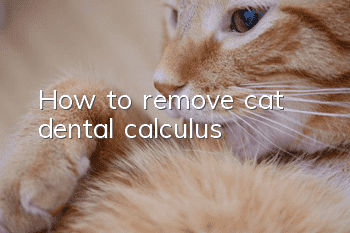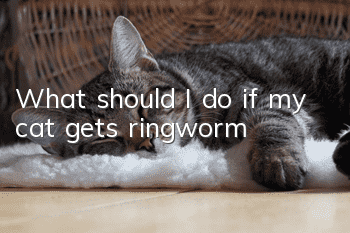How to remove cat dental calculus?

There are two main ways to remove cat dental calculus: brushing and ultrasonic teeth cleaning. First of all, if the cat’s dental calculus is not serious, you can try brushing the cat’s teeth regularly or using dental cleaning gel. Secondly, if your cat has severe dental calculus and red and swollen gums, you need to take your cat to a pet hospital for professional ultrasonic teeth cleaning. After teeth cleaning, you still need to brush your cat’s teeth regularly. In addition, if you are a family that feeds soft food, you can also replace the food with dry cat food, which can help the cat clean its teeth when chewing and remove tartar and plaque through friction.
1. Brush your cat’s teeth regularly
If the cat’s dental calculus is light, the owner can choose to use cat-specific toothpaste and toothbrush to brush the cat’s teeth. It is generally recommended that the owner brush the cat’s front teeth and canine teeth first, and then brush the back teeth after the cat gets used to it. After a period of time, the cat There will be significant improvement in dental calculus. At the same time, the owner can develop the habit of brushing the cat's teeth when it is young, because cats are carnivores. After eating meat, if the owner does not brush the cat's teeth in time, the cat is likely to develop dental calculus.
If your cat has a gentle and obedient personality, you can also choose to apply pet tooth cleaning gel directly on the teeth, which will make it easier for the cat to get used to it and remove dental calculus. If the cat has never brushed its teeth or is tired of brushing its teeth, you can apply toothpaste on its teeth and the cat will lick its mouth, which can also achieve the effect of brushing its teeth. In addition, you can also use pet dental cleaning water, which can be directly placed in drinking water for cats to drink.
2. Ultrasonic tooth cleaning
If the cat’s dental calculus is severe and ordinary brushing cannot remove the calculus, the owner needs to take the cat to the pet hospital for ultrasonic dental cleaning, and brush the cat’s teeth regularly after cleaning.
Since dental cleaning surgery requires general anesthesia, a preoperative examination is required to generally understand the cat’s ability to tolerate anesthesia. If the cat's body is not suitable for general anesthesia, necessary oral care is generally taken. At the same time, the owner also needs to fast the cat 10 hours before the operation, and deprive the cat of water for the first 4 hours. During the teeth cleaning process, the cat’s head should be kept lower than the body to prevent water from being inhaled into the lungs and causing foreign body pneumonia.
3. Feed dry cat food
If you are a family that feeds soft food, you can replace the food with cat food. Cat food has a unique particle shape, which can help cats clean their teeth when chewing and remove tartar and plaque through friction. Therefore, cats with dental calculus can try to eat dry cat food as their daily staple food. In addition, you can also add mouthwash or dental gel to your cat's diet to help remove dental calculus.
Note: Cats that develop dental calculus must be treated in time, because the bacteria below the gum line will secrete toxins. When the dental plaque and calculus are serious, the cat will developInflammatory diseases such as oral ulcers, gingivitis, and stomatitis are now present. Cats often show that they don’t like to eat, or have symptoms such as bad breath, difficulty swallowing, gum abscesses, bloody saliva, or even tooth loss. If not treated in time, it may also cause lesions in the heart, liver and kidneys.
- What do I need to prepare to raise a kitten?
- Reasons and solutions for hair loss in Egyptian cats
- What basic care does a cat need every day and every week?
- What are the effects of hair removal cream and cat grass on cats eating hairballs?
- What to do if a Norwegian Forest Cat coughs
- Are there any harms to adult cats eating kitten food?
- How many months old can an exotic shorthair cat eat cat food? Common knowledge on feeding exotic shorthair cats!
- How to train a cat not to jump on the bed? How to train a cat not to jump on the bed!
- What causes tears in cats
- A complete collection of cat training strategies, a must-read for poop scrapers!



